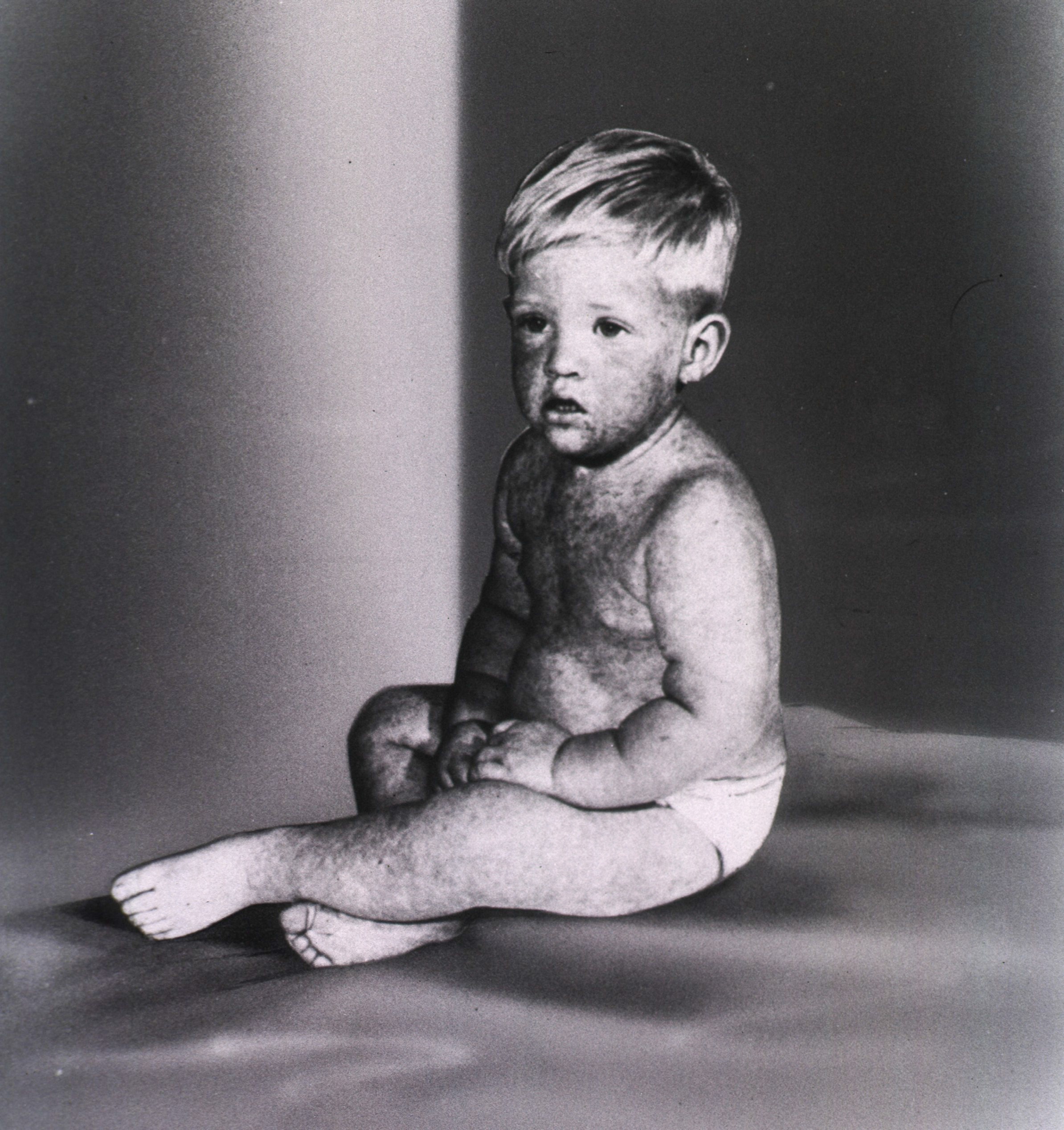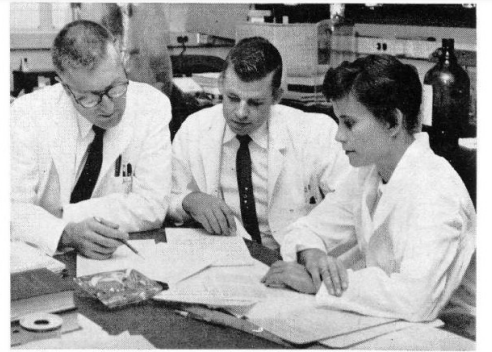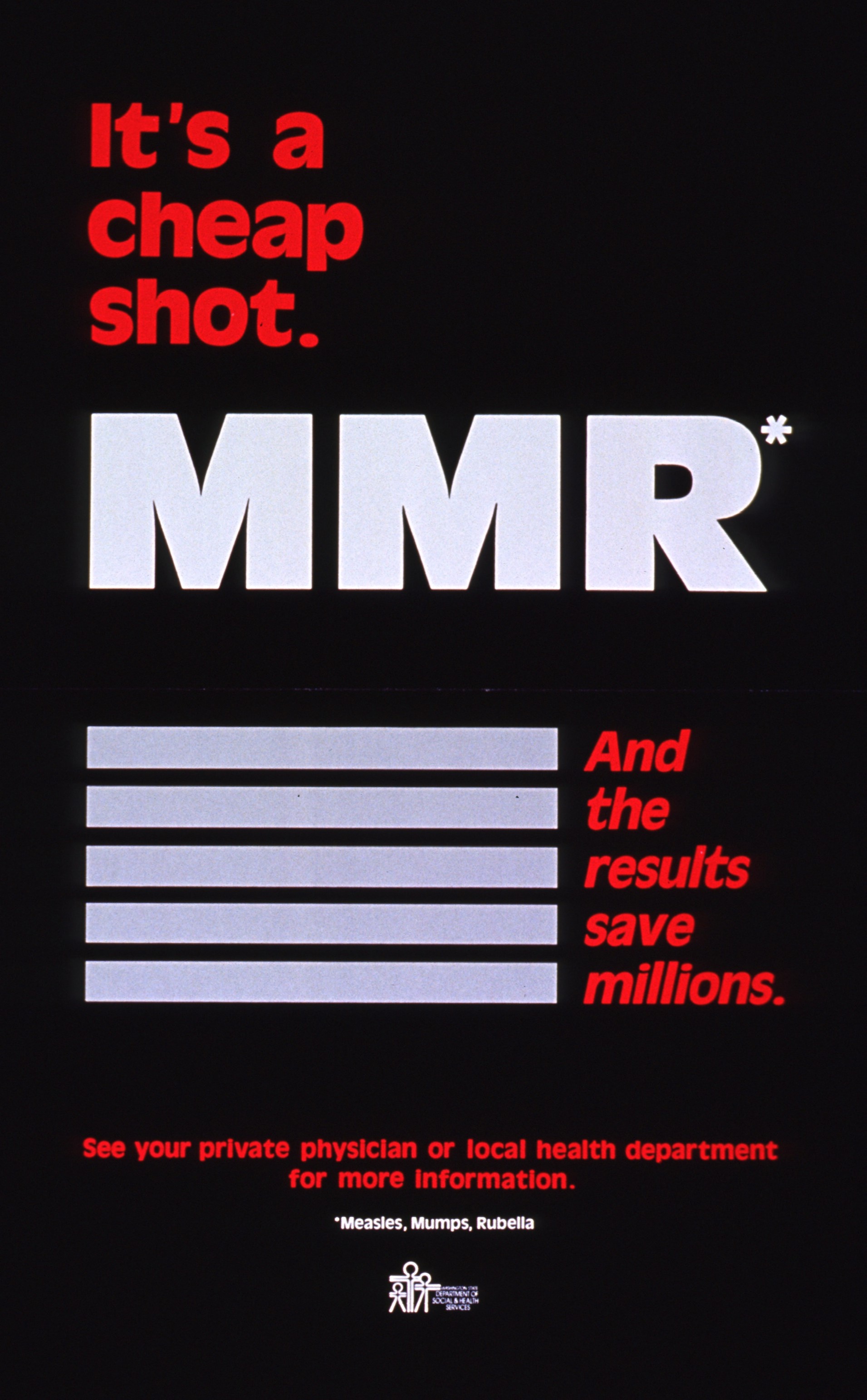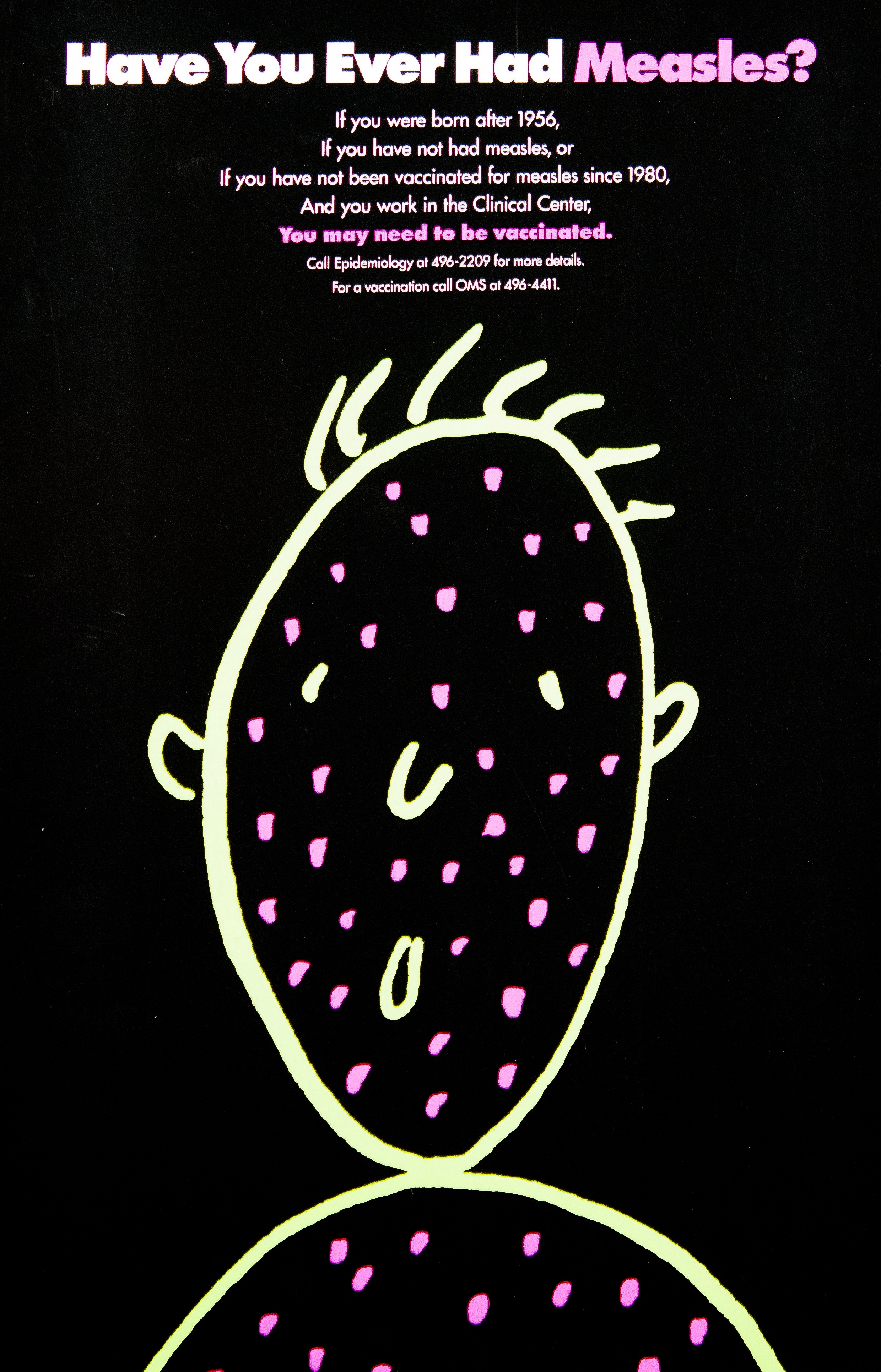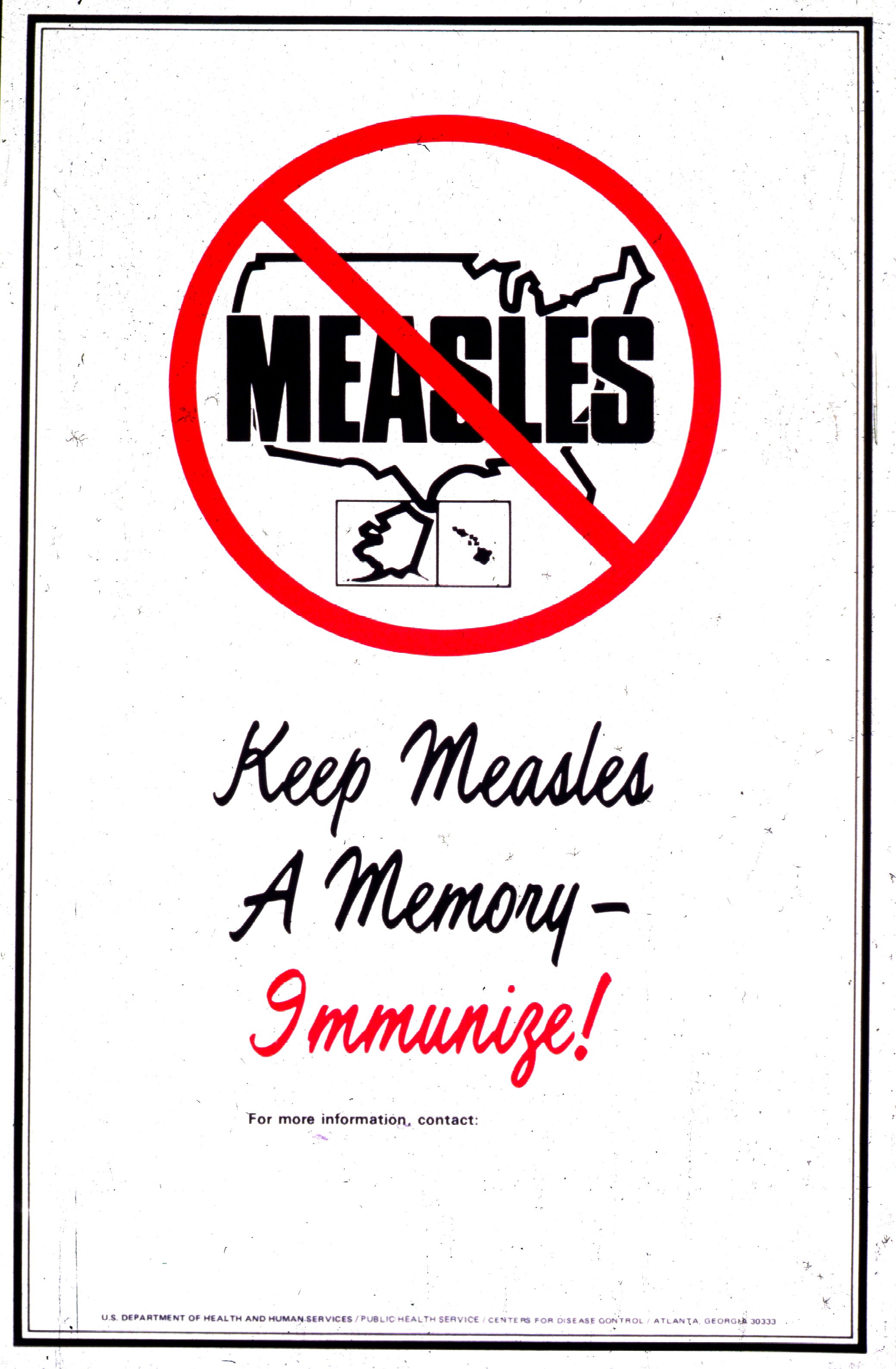Measles Research and Vaccine
• As early as the 9th century, a Persian doctor wrote about measles
• In 1757, Dr. Francis Home, a Scottish doctor, demonstrated that measles is caused by an infectious agent in the blood
• In 1912, measles became a nationally notifiable disease in the United States, requiring doctors and laboratories to report all diagnosed cases. An average of 6,000 measles-related deaths were reported per year from 1912 to 1922.
• In the first half of the twentieth century, nearly all children got measles
• Encephalitis (swelling of the brain) was a possible side effect of measles
• Other symptoms included high fever, cough, runny nose, red, watery eyes, tiny white spots inside the mouth, and a red rash, usually beginning at the head
• In 1954, Dr. John Enders and Dr. Thomas C. Peebles collected blood samples from ill students during a measles outbreak in Boston, hoping to isolate the virus and create a vaccine. The successfully isolated the virus from 13-year-old David Edmonston’s blood.
• From 1961–1962 the NIH conducted vaccine trials in West Africa. The study was conducted by Dr. Harry Meyer Jr., Chief of Section on General Virology in the Laboratory of Virology and Rickettsiology, Dr. Daniel Hostetler, Jr., and Barbara Bernheim, who spent 6 months in the Republic of Upper Volta in West Africa. They used the live attenuated Edmonston strain measles vaccine developed by Dr. John Enders at Harvard University. The NIH team and the eight 3-member Voltan teams that they trained together vaccinated more than 731,000 children between the ages of seven months and four years.
• In 1963, John Enders and colleagues, who had transformed the Edmonston-B strain of the measles virus to a vaccine, licensed it in the United States.
• In 1968, an improved and weaker measles vaccine, created by Maurice Hilleman and colleagues, began to be distributed in the United States. This vaccine was called the Edmonston-Enders (formerly Moraten) strain and has been the only vaccine used in the United States since.
• The measle vaccine is usually combined with the mumps and rubella vaccine (MMR) and sometimes with the varicella vaccine too (MMRV).
• Measles research at the NIH was in the Laboratory of Virology and Rickettsiology in Building 29, but the lab then moved to Building 29A in 1967 when the annex opened.
• In 1757, Dr. Francis Home, a Scottish doctor, demonstrated that measles is caused by an infectious agent in the blood
• In 1912, measles became a nationally notifiable disease in the United States, requiring doctors and laboratories to report all diagnosed cases. An average of 6,000 measles-related deaths were reported per year from 1912 to 1922.
• In the first half of the twentieth century, nearly all children got measles
• Encephalitis (swelling of the brain) was a possible side effect of measles
• Other symptoms included high fever, cough, runny nose, red, watery eyes, tiny white spots inside the mouth, and a red rash, usually beginning at the head
• In 1954, Dr. John Enders and Dr. Thomas C. Peebles collected blood samples from ill students during a measles outbreak in Boston, hoping to isolate the virus and create a vaccine. The successfully isolated the virus from 13-year-old David Edmonston’s blood.
• From 1961–1962 the NIH conducted vaccine trials in West Africa. The study was conducted by Dr. Harry Meyer Jr., Chief of Section on General Virology in the Laboratory of Virology and Rickettsiology, Dr. Daniel Hostetler, Jr., and Barbara Bernheim, who spent 6 months in the Republic of Upper Volta in West Africa. They used the live attenuated Edmonston strain measles vaccine developed by Dr. John Enders at Harvard University. The NIH team and the eight 3-member Voltan teams that they trained together vaccinated more than 731,000 children between the ages of seven months and four years.
• In 1963, John Enders and colleagues, who had transformed the Edmonston-B strain of the measles virus to a vaccine, licensed it in the United States.
• In 1968, an improved and weaker measles vaccine, created by Maurice Hilleman and colleagues, began to be distributed in the United States. This vaccine was called the Edmonston-Enders (formerly Moraten) strain and has been the only vaccine used in the United States since.
• The measle vaccine is usually combined with the mumps and rubella vaccine (MMR) and sometimes with the varicella vaccine too (MMRV).
• Measles research at the NIH was in the Laboratory of Virology and Rickettsiology in Building 29, but the lab then moved to Building 29A in 1967 when the annex opened.
Male toddler with measles, circa 1950s. National Library of Medicine
Dr. Harry M. Meyer, Jr., at left, Dr. Daniel Hostetler center, and Barbara Bernheim at right, all members of the team who went to the Upper Volta for measles vaccination trials. National Library of Medicine
Gallery
Overview
Content Tools
ThemeBuilder


